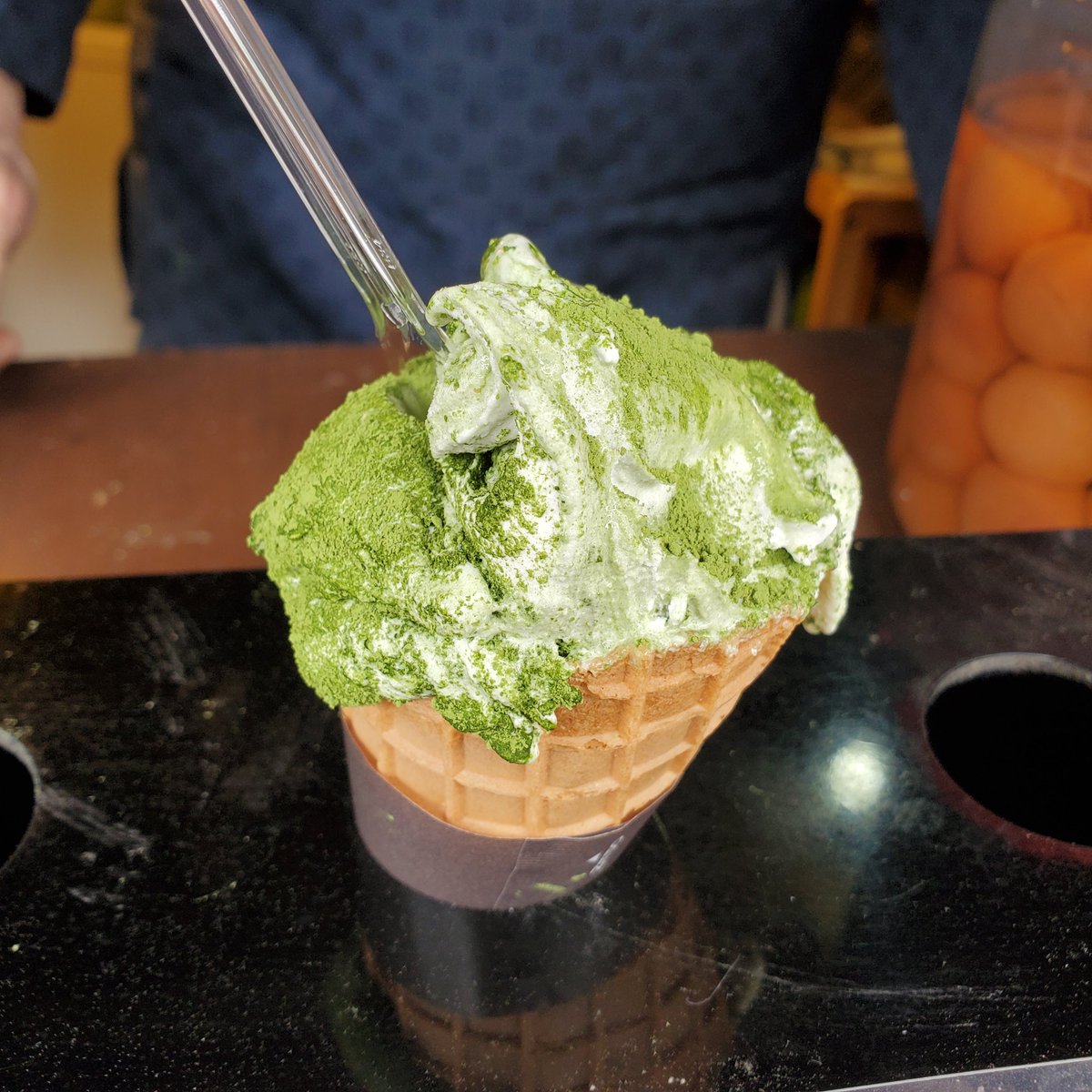🎨A MODERN TOUCH🖌️
One of the Shōren-in's (青蓮院) most striking features greets you as you enter the drawing room...a series of bold coloured lotuses, blooming across 60 panels.
Begun in 2005, the work was created by the artist 'Ki-yan' (キーヤン/Kimura Hideki 木村英輝).
#Japan



One of the Shōren-in's (青蓮院) most striking features greets you as you enter the drawing room...a series of bold coloured lotuses, blooming across 60 panels.
Begun in 2005, the work was created by the artist 'Ki-yan' (キーヤン/Kimura Hideki 木村英輝).
#Japan




When visiting Shōren-in, Kimura was suddenly inspired to fill the drawing room's plain fusuma with colour.
It took him two years to complete the 3 sets of lotus paintings (蓮三部作)...
🪷"Blue Illusion" (青の幻想)
🪷"Amitabha's Pure Land" (極楽浄土)
🪷"Hymn of Life" (生命賛歌)



It took him two years to complete the 3 sets of lotus paintings (蓮三部作)...
🪷"Blue Illusion" (青の幻想)
🪷"Amitabha's Pure Land" (極楽浄土)
🪷"Hymn of Life" (生命賛歌)




Why all the blue lotuses?🤔
Shōren-in was originally constructed atop Mt Hiei as a lodging facility for monks serving at Enryaku-ji.
Shōren-bō was named after a nearby pond in which blue lotus flowers bloomed ('shōrenge'). Many famous monks, such as Saichō & Ennin, lived here. twitter.com/i/web/status/1…
Shōren-in was originally constructed atop Mt Hiei as a lodging facility for monks serving at Enryaku-ji.
Shōren-bō was named after a nearby pond in which blue lotus flowers bloomed ('shōrenge'). Many famous monks, such as Saichō & Ennin, lived here. twitter.com/i/web/status/1…

🪷A 1000 YEAR OLD TREAT😋
@kameyakiyonaga's (亀屋清永) 'seijō kankidan' (清浄歓喜団) is one of Japan's oldest sweets, unchanged in appearance since it arrived on these shores.
In the Edo period bean paste replaced the original spiced chestnut, apricot and persimmon filling.



@kameyakiyonaga's (亀屋清永) 'seijō kankidan' (清浄歓喜団) is one of Japan's oldest sweets, unchanged in appearance since it arrived on these shores.
In the Edo period bean paste replaced the original spiced chestnut, apricot and persimmon filling.




In the Nara period envoys to the Tang dynasty returned with sweet pastries called 'karakudamono' or 'tōgashi' (唐菓子).
At first used as offerings by the esoteric Buddhist sects, in the Heian period the treats became a staple at aristocratic banquets.
#京都 #唐菓子 #wagashi
At first used as offerings by the esoteric Buddhist sects, in the Heian period the treats became a staple at aristocratic banquets.
#京都 #唐菓子 #wagashi
The earliest recorded pastry is mentioned in an early 10thC dictionary.
Originating in India (there known as 'modak'), the sweet passed through 'China' (as 'huanxituan' - 'balls of joy') to Japan, where they were christened 'kankidan' (歓喜団), 'danki' (団喜) and 'odan' (お団).



Originating in India (there known as 'modak'), the sweet passed through 'China' (as 'huanxituan' - 'balls of joy') to Japan, where they were christened 'kankidan' (歓喜団), 'danki' (団喜) and 'odan' (お団).




There is a deep symbolism behind the shape and ingredients of the kankidan.
👃7 'scents' are kneaded into the bean paste (representing purification)
🪷The sweet is shaped like a money bag (good fortune), with 8 'knots' symbolising an 8-petalled lotus (the path to enlightenment)
👃7 'scents' are kneaded into the bean paste (representing purification)
🪷The sweet is shaped like a money bag (good fortune), with 8 'knots' symbolising an 8-petalled lotus (the path to enlightenment)

High ranking monks from Hiei-zan first passed on the secret method for making kankidan to Kameya Kiyonaga (亀屋清永).
The store sells both seijō kankidan and buto (餢飳), a pasty (or helmet🤔) shaped sweet also brought over to Japan 1000 years ago.
Photo thanks🙇♂️-@kameyakiyonaga



The store sells both seijō kankidan and buto (餢飳), a pasty (or helmet🤔) shaped sweet also brought over to Japan 1000 years ago.
Photo thanks🙇♂️-@kameyakiyonaga




• • •
Missing some Tweet in this thread? You can try to
force a refresh

 Read on Twitter
Read on Twitter



















































